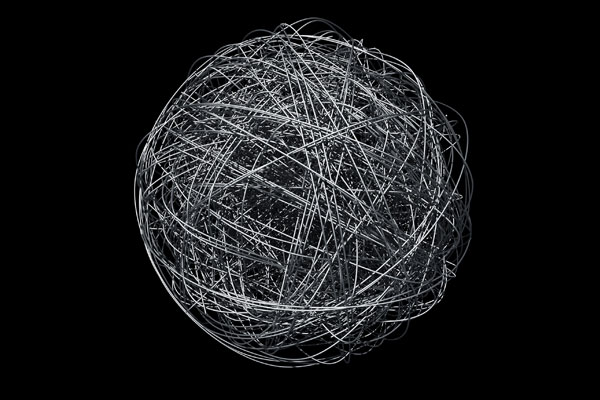Unraveling the Gordian Knot of IT Transformation
Enabling change: A fresh perspective for visualizing relationships and dependencies in IT
 Maybe you’ve heard about it: The Gordian Knot, an ancient legend associated with Alexander the Great from around 350 B.C. In modern usage it means an intractable problem easily solved by fresh thinking. It might also apply to the problem of how to keep all the elements of a modern IT environment like dependencies up-to-date and in sync. Here too, fresh thinking solves the problem.
Maybe you’ve heard about it: The Gordian Knot, an ancient legend associated with Alexander the Great from around 350 B.C. In modern usage it means an intractable problem easily solved by fresh thinking. It might also apply to the problem of how to keep all the elements of a modern IT environment like dependencies up-to-date and in sync. Here too, fresh thinking solves the problem.
Consider how the emergence of hybrid computing and federated systems has blurred the lines between physical, virtual, and cloud infrastructures.
Systems have simultaneously become much more powerful, interconnected and, therefore, more fragile. As your environment evolves, each next change increases complexity and interdependency.
The application architect alone is no longer equipped to assure that the business applications keep running smoothly. It requires a team of subject matter experts representing each of your IT silos working together to develop an acceptable approach encompassing server, storage, networks, database, applications and security.
Somewhere along the way, you will pass the point of diminishing returns, where the ripple effects of your next change are just so far-reaching and so complex they’re beyond the capabilities of your team of experts to resolve. Then, as though driven by the adage — “if it ain’t broke, don’t fix it” — the pace of change slows down and eventually stops. This is the IT Gordian Knot.
The only problem is that, eventually, you will have no choice but to change, fix or update something in your environment. And when that time comes, the process of reconciling this complexity will be more daunting than ever, creating almost a “you can’t get there from here” type scenario. Whether it is the deployment of a new application, a hardware refresh, a cloud migration or a complete data center relocation — sooner or later, you will need to change. And when that time comes, how will you break your Gordian Knot?
A Software Based Solution
TDS has solved precisely this problem. The solution is to combine and codify in software the collective knowledge of your team and empower each team member with full IT visibility, even beyond their traditional scope of responsibility. The solution comes from realizing that your entire IT infrastructure can be understood within just a couple degrees of separation from the perspective of each of your “subject matter experts” – be they application owners, database administrators, server / storage / network administrators, software developers, application architects and CTO. When you are able to combine this collective knowledge in a way that is easy to understand and is actionable by stakeholders, then you will have unraveled your IT Gordian Knot and empowered IT to innovate and change.
How did TDS implement this solution? We started by approaching the problem a new way. Continuing to throw more and more bodies at the task only makes things worse, not better. Instead, we created TransitionManager, a web based tool that helps IT teams visualize the entire infrastructure in a multi-dimensional manner that transcends each of the operating silos within the organization. And where does the information come from? The quickest and most accurate way to achieve this view is by interviewing subject matter experts and then cross correlating their collective knowledge in TransitionManager. Once this happens, TransitionManager provides a unified view of an entire environment, consistent with the perspectives of all subject matter experts.
That means everyone on your team can now have a single coherent view with control over all your IT silos — so not only do all the dependencies become visible, but so do the ripple effects impacting any of them, as well as any action steps needed to be taken to resolve those effects. So, instead of knot — an IT environment built to impede change — you have an IT environment built to facilitate change.
